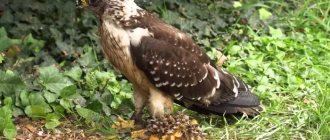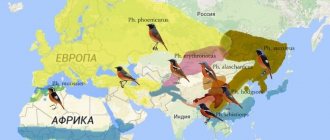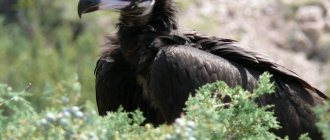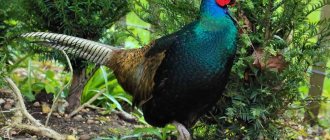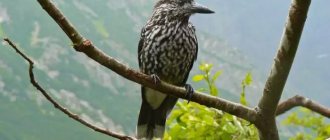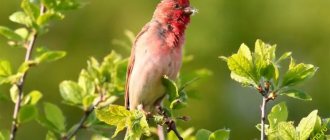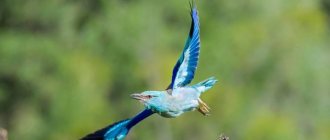Description and features
The order Charadriiformes amazes with the diversity of individuals. It is difficult to note the main external features of birds. But there are several features common to all representatives of the squad. Birds are attached to the aquatic habitat. This connects all the birds. Their diversity increases from warm to cold habitats. Therefore, we can safely say that these are northern birds.
Plovers like to live in shallow waters. All birds of the family are characterized by an average body size, a shortened beak with a thickening at the end. Some plovers belong to a different family and are more impressive in size.
The entire genus of plovers is distinguished by the presence of light or golden spots on a blackish body. Long, sweeping wings, distinguished by a pointed apex, help make long-distance flights. In color with the whole body, the beak and even the iris of the eyes have a dark tint.
Representatives of the entire order Charadriiformes are small. Apart from their size and near-aquatic, often cool habitats, there is little in common between them. There are noticeable differences in the characteristics of behavior, reproduction, and habitat.
Therefore, scientists have united the flying birds into many groups, among which are plovers. However, distinctive features are also found among different species of this genus. An ancient relative of the plover had features of ducks and ibises.
The white plover is a family that includes two species. Birds have white feathers. Body length is only 40 centimeters. At the same time, males reach a larger size than females. The wings are small, their span reaches a maximum of 84 centimeters. The bird moves quickly; its peculiarities include the head nodding characteristic of a pigeon.
The mass of the Golden Plover does not exceed 220 g. Body size is 29 centimeters. The wingspan is smaller than that of the previous representative of Charadriiformes - only up to 76 centimeters. The overall appearance is awkward. The head has a gray-brown tint and a circular shape. The period of changing feathers changes the males. A light stripe is visible on the black breast and neck.
The Brown-winged Plover has a darker color and smaller volumes than the Golden Plover. The underwing of the wing is gray, while other birds have black and white tints in this place.
Tules, a larger representative of Charadriiformes in weight, reaches 320 g. But the wingspan and size of the plovers are inferior.
During the mating season, the male boasts a black tint on the neck, sides of the head, forehead, and back. And under the tail it is white. Females on the back side have iridescent brown tints. White spots are visible below. One of the features of Tules is the presence of a fourth finger, which is not found in other Charadriiformes.
Crayfish plovers have a body up to 40 centimeters long. Females and males are basically the same. The exception is the beak, which is slightly larger in males. The legs and neck stand out, the beak is weighty, which is why the volume of the head also differs.
It is so strong that a hunter can break the covers of crayfish with it. The plumage below is light. But the back and wings on top are dark shades. Mature individuals have a darker color than young animals. And there is no pattern on the head. Birds rarely run fast, but their legs are long and have a gray-blue tint.
Lifestyle
The lifestyle of almost all representatives of the order can be defined as colonial. Birds live in large groups. They make long-distance flights. However, there are also loners, there are fewer of them. Laying nests, incubation, as well as migration, occurs in colonies.
Ornithologists observe the Plover family on the coasts of the Wadden Sea, as well as Semangeum. Its area allows for the settlement of about 30 species of plovers. The coastline is a nesting and winter habitat area.
The golden plover has a protected status with minimal risk. This applies to other plovers as well. The birds have adapted well to their habitat; latitudes with harsh climates do not provoke a decrease in the number of species.
The individual survives the nesting period exclusively in damp areas. These are wastelands, meadows, and even swamps. Despite its protected status, ornithologists claim that the bird can no longer be found in Central Europe.
The brown-winged plover prefers dry areas for breeding and habitat in general. In the tundra, representatives can be found at higher elevations. They are one of the few Charadriiformes that prefer to avoid coastal areas, presumably in competition with Golden Plovers.
The behavioral habits of Tules are most different from other individuals of one large order and even the family of plovers. The bird moves quickly, at this moment making very sharp stops to catch easily accessible prey. Its diet also contains aquatic inhabitants, which cannot be said about the Brown-winged Plover.
Plovers live in large groups, the number of inhabitants in which can reach 1000. Nesting also occurs in such conditions. Plovers exhibit an active lifestyle at night and dawn.
Habitat
The area of residence of the order Charadriiformes is extensive. They are found mainly in the northern regions. Some individuals fly between the islands of the Arctic Ocean and Antarctica. Biodiversity gradually increases from the tropics to the northern regions. It was osmoregulation that caused such an increase in the number of these birds.
Birds from the plovers family can be observed on the coastlines of Denmark, Germany, the North Sea, the Netherlands, and the Korean Peninsula. The genus of plovers lives in the tundra and forest-tundra of Eurasia and North America. Wintering occurs in South America, Australia, New Zealand, as well as on the warm tropical Pacific islands.
The snowy plover is common in Antarctica and is more adapted to harsh climatic conditions. The birds nest on the island of South Georgia, the Antarctic Peninsula, the Shetland Islands, and also the Orkney Islands.
The Golden Plover's habitat ranges from Iceland and Great Britain to central Siberia. In northern latitudes these are the boundaries of the Arctic tundra. Unlike Central Europe, a surprising number of birds can be found in northern locations. In the west and south of Europe, the habitats are predominantly meadows and fields.
The brown-winged plover prefers hummocky and moss-lichen tundras. Birds have become widespread in the elevated areas of Taimyr. The list of habitat zones also includes slopes of ridges, hummocky areas of tundra, and shrubby tundra. At the edge of the bushland, Brown-winged Plovers meet with Golden-winged Plovers.
The hatching and main habitat of Tules takes place in the Arctic tundras of Eurasia. These are lands from Kanin to Chukotka. Central Europe can only observe the migrations of these birds. Waiting out winter occurs in Africa, South Asia, Australia, and America.
The crayfish plover lives in the lands of the Red Sea and the Persian Gulf. There are nine colonies in Abu Dhabi, Iran, Oman, Saudi Arabia, Somalia. There are 30 colonies and more than 10,000 individuals living on the coast of Eritrea.
In addition, you can meet flying ones in Madagascar, Seychelles, India, Sri Lanka, Tanzania, and Thailand. These birds generally do not move further than 1000 meters from the water. Common locations are lagoons, beaches, river deltas.
Nutrition
The diet of all representatives of Charadriiformes differs depending on their living habits and habitat. These can be spineless marine organisms, algae, crustaceans, plant seeds, and insects. Representatives of the genus include mainly insects and mollusks in their diet. The menu includes berries and seeds of plants that are found in the habitat.
Golden plovers prefer insects, worms, and snails. Birds search for all their prey within reach on the ground. The beak can catch dragonflies, larvae, bugs and even locusts. Crustaceans are rarely included in the menu, depending on the area where they are located.
Plant foods are partly included in the diet. Brown-winged plovers can also eat insects. But they prefer to get berries and parts of plants. In particular, these are lingonberries and crowberries. The Tules diet differs in almost no way. But he prefers to eat small aquatic inhabitants. The diet of the Plover is different. That's why it got its name.
Birds visit shallow waters in search of food. The main prey is crustaceans. The bird acts quickly. Thanks to its beak, it has the strength to destroy the protective shell of its prey. Sometimes it attacks Mudskippers, a ray-finned fish. The feeding method of the Snowy Plover deserves special attention. They take prey from other coastal inhabitants.
Footnotes [edit]
- ↑
Fain & Houde (2004). - Erickson et al.
(2003), Paton
et al.
(2003), Thomas
et al.
(2004a, b), van Tuinen
et al.
(2004), Paton and Baker (2006) - ^ ab John, Boyd. "Chadriiformes". jboyd.net
. Retrieved July 16, 2022. - van Tuinen et al.
(2004), Paton and Baker (2006) - Baker, Allan J.; Yatsenko Yuri; Tavares, Erica Sendra (2012). "Eight independent nuclear genes support the monophyly of plovers: the role of mutational variation in gene trees." Molecular phylogenetics and evolution
.
65
(2):631–641. DOI: 10.1016/j.ympev.2012.07.018. PMID 22842291. - Case, J. A., and C. P. Tambussi. 1999. The Maastrichtian record of neornithine birds in Antarctica: comments on the Late Cretaceous radiation.
- Proximal right humerus (MNZ S42416) and proximal left carpometacarp (MNZ S42415, S42435) of a redneck-sized bird: Worthy et al.
(2007) - ↑
Several wing and thorax bones from a bird the size of a double-banded plover: Worthy
et al.
(2007) - Premaxillae (MNZ S42681, S42736) and proximal right scapula (MNZ S41058) of a bird apparently similar to the black-billed gull, but almost the size of a kelp gull: Worthy et al.
(2007) - Gal et al
(1998-99) - White stork-sized wading bird ( Ciconia ciconia
): Burdona (2005) - Thomas, G. H., T. Szekely, and J. D. Reynolds. 2007. Sexual conflict and the evolution of shorebird breeding systems. Advances in the study of behavior. 37: 279–342.
- Tullberg, B. S., M. Ah-King, and H. Temrin. 2002. Phylogenetic reconstruction of parental care systems in avian ancestors. Philosophical Transactions of the Royal Society of London. Series B, Biological Sciences. 357:251–257.
- Jump up
↑ Klug, H., M. B. Bonsall, and S. H. Alonzo. 2013. Sex differences in life history shape evolutionary transitions between maternal, paternal, and reciprocal care. Ecology and evolution. 3: 792–806. - Liker, A. R. Freckleton, and T. Székely. 2013. The evolution of sex roles in birds is linked to adult sex ratios. Nature Communications. 4: 1587.
Reproduction
The plover is a monogamous bird. Birds live in pairs for several seasons. Not everyone makes nests. This could be light bedding or a nest taken from another bird. But Golden Plovers make a deep place in the soil, lining a place for laying.
Usually 4 eggs are born; not only the female, but also the father is involved in the incubation process. The coloring of the shell is dark yellow and covered with patches. The chicks see the light after a month. After this, they can immediately eat.
Brown-winged plovers make the nest a little smaller, but also incubate 4 eggs. The shell color is similar. Both family members protect the nest and ward off a possible pest. The chicks break through the shell in mid-July, soon begin to fly, and a month later reach the size of adults.
The color of Tules eggs is pinkish, brown, olive. Therefore, it is easy to distinguish which egg this plover laid in the photo . Hatching occurs for 23 days. After birth, the chicks are not immediately able to live independently; for this, 5 weeks must pass. The bird's nest is lined with a thin layer of grass and lichens.
The white plover builds nests not only from grass, but also from stones, shells, and bones. Penguins and cormorants nest nearby. Usually in December-January 2-3 chicks appear, only one survives. The rest are killed by the parent himself. The chick needs to stay in the nest for two whole months before becoming independent.
Plovers do not build nests. They make burrows in the dunes. The passages are wide and indirect. Usually 1 egg appears. The shell color is white. A few days after birth, the chicks are not at all independent.
Order Charadriiformes Charadriiformes
The color is characterized by the absence of bright color spots and the predominance of brown, black, white and brown tones. For many, the upper and lower sides of the body are colored in contrasting colors. Mainly migratory species. Pair formation proceeds through complex current demonstrations. Most species do not build nests; eggs are laid in holes in the sand and grass. Many nest in colonies and stay in flocks outside the breeding season. In the nest, waders have 4 eggs, gulls have 3, and auks have 1-2 pear-shaped eggs. Half-brood chicks. Males often participate in incubation and raising of offspring. The basis of nutrition is various animal feeds. Charadriiformes use feathers, meat, and eggs. But recently the number of protected species has increased. Some seagulls have become a danger to airplanes or are a source of urban pollution. Charadriiformes are exterminators of agricultural pests and natural regulators in biocenotic chains.
Snipe family Scolopacidae
Snipe
Gallinago gallinago
Breeding migratory and transit migratory species. Single individuals sometimes spend the winter. Distributed throughout Belarus. During the nesting period, the total number is 70,000-90,000 pairs. In 1960-80 There was a significant reduction in numbers as a result of the drainage of more than 60% of the republic's wetlands. In recent years, due to the development of re-wetting of reclaimed swamps, a slight increase in the number of the species can be expected.
Somewhat larger than the starling. Body weight, depending on the season, ranges from 90 to 145 g. The legs are of medium length, the beak is much longer than the head. The upperparts are brownish-brown with buffy streaks, the chest is brownish-buffy with longitudinal streaks, the belly is white. The crown is black with a longitudinal ocher stripe. The outer tails are almost equal in width to the middle ones, rufous with transverse stripes and a white tip. Males and females are colored similarly.
The snipe differs from the snipe, which is similar in appearance, by its white, unstreaked belly and red outer tails. In the field, these species also differ in the nature of their behavior: when startled, the snipe, unlike the great snipe, takes off sharply with characteristic quack-like cries, its flight is more rapid and zigzag.
Inhabits swampy floodplain meadows, areas of lowland and transitional swamps with mud bumblebees, and the outskirts of raised swamps. Does not avoid bushy areas. It is also quite tolerant of anthropogenic impact; it is often found on wet pastures broken up by livestock in the vicinity of villages. During migration, birds stop at drained ponds, muddy ponds and other moist places.
In Belarus, the first snipes appear in the spring at the end of March - beginning of April. During the current, which can be observed from early spring until almost July, the male flies in wide circles - sometimes rising high, sometimes sharply diving down. When diving, a rattling sound is heard, reminiscent of a bleat, produced by widely spaced tail feathers. The greatest current activity occurs in the morning and evening hours. Current flights are accompanied by characteristic, far-audible screams: the annoying “ta-ke...ta-ke-ta-ke...”. They can be produced by both males and females, not only in flight, but also while sitting on a tree or ground. This terrestrial bird can often be seen sitting on snags, the tops of poles and dry treetops.
Some snipes nest early in late April - May, mainly in swamps, while others nest a few weeks later, in floodplains. The nest is located on the ground, well camouflaged. Brood chicks. In July, pre-migration movements of snipes begin and their gradual departure, which often drags on until the second half of October. During migrations, snipes often concentrate several dozen individuals in places rich in food, flocking there at dusk to feed.
They hunt snipe, as a rule, with a pointing dog. They manage to get it, although with great difficulty and without a dog, “trampling” it out of the grass. Thanks to its maneuverable, swift flight, snipe hunting is extremely sporty. Only the most skilled shooters manage to catch this bird in flight. It is no coincidence that the word “sniper” comes from the English name for the snipe “snipe” and is literally translated as “snipe.” Hunting is allowed from the first Saturday in August to the last Sunday in November. For hunters with a gun dog, hunting is allowed a few weeks earlier in mid-July. You can hunt with a gun with dogs (except for hounds and greyhounds) and without a gun with birds of prey.
Great snipe
Gallinago media
Breeding migratory and transit migratory species. It is found extremely unevenly on the territory of Belarus. In recent decades, a sharp decline in numbers has been noted, which currently does not exceed 2-5 thousand pairs. This is due not only to the extensive drainage reclamation of swamps and plowing of wetlands, which led to the disappearance of many of the original mating and nesting areas of the snipe, but also to the degradation of the great snipe’s wintering grounds in Africa.
Slightly larger than snipe. Depending on the season, body weight ranges from 130-250 g, in some cases in the fall it can be even higher. The beak is long, however, somewhat shorter than that of the snipe. The sides and abdomen are covered with transverse streaks. The outer tails are white, sometimes with black stripes. Males and females are colored similarly.
It differs from the snipe, which it is very similar to, in its motley belly and sides, as well as in the white outer tail feathers. In addition, unlike the snipe, which takes off in a zigzag manner and screams, it takes off silently, the flight is straightforward, unhurried, and flies low above the ground.
Inhabits open and lightly bushed wet areas of all types, primarily floodplain meadows and sedge bogs.
The snipe arrives somewhat later than the snipe: the first birds appear in mid-April, the arrival of others is delayed until the end of April - beginning of May. A few days after arrival, the males begin to concentrate on the current sites. Great snipe leks are a remarkable phenomenon: before sunset, males gather in groups in dry places, run around with their wings down and feathers fluffed up, fight and make peculiar chirping sounds. At dawn the current stops. On good leks, up to 2-3 dozen birds can gather. After mating, which occurs at the mating site, the male’s participation in procreation ceases - the care of raising the offspring falls entirely on the female. The nest is made on the ground among dense grass. Egg laying occurs mainly during May. The chicks hatch sighted and covered with dense down. After 1-2 days, they follow the female to places suitable for feeding and shelter.
Great snipes usually feed at night and at dusk, eating shoots and roots of plants, worms, mollusks, insects and their larvae. At the end of summer, birds feed heavily and become very fat. During this period, they go to more open places - meadows in floodplain meadows, grassy swamps, etc. Moving across feeding grounds, they form so-called “rashes”, accumulating in particularly feeding areas. With the approach of autumn and the appearance of migratory birds, rashes become more widespread, but already in September most of the snipes fly to the southern regions.
Woodcock
Scolopax rusticola
Breeding migratory and transit migratory species. Distributed throughout Belarus. The number is quite stable and during the nesting period it amounts to 100,000-120,000 pairs. In wintering areas, which are partially located within the breeding range (Western Europe and southern Great Britain), during cold weather and snowfalls, woodcocks often find themselves in distress and require all possible protection.
A rather large (pigeon-sized) sandpiper with short legs and a very long (about 7 cm) beak. Body weight is 270-300 g. The top is reddish-rusty with dark and light streaks, the bottom is gray with a transverse brown pattern. The male and female are indistinguishable in color. The eyes are large, black, somewhat set back to the back of the head, due to which the woodcock has an expanded field of vision. The protective coloration of the bird makes it almost invisible among the withered grass and fallen leaves in the twilight of the forest thicket.
Woodcocks differ from snipe and great snipe by their large size, relatively wider wings, short legs and straight flight, with sparser flapping of the wings.
Unlike most species of waders, the woodcock is a typical forest dweller. Inhabits deciduous and mixed forests, mostly swampy, often even waterlogged, or located in low-lying areas. Gravitates towards places with well-developed undergrowth and soft soil. Particularly preferable for woodcock are transitional areas between forest and swampy floodplain and swamp.
Leads a secretive lifestyle, hides when there is danger and takes off only when approaching a few meters. In contrast to the noisy take-off of the hazel grouse, which is similar in size, the woodcock’s take-off is smoother and lighter. Due to their secretive lifestyle, woodcock is difficult to quantify. An indirect indicator of the abundance of birds in the area is the number of males noted per evening from one point on the route. On average, you can see 8-10 birds, and in very good places - up to 20-25. It is necessary to take into account that the same male, describing circles, can fly into the field of view of the observer several times. Woodcocks appear on the territory of Belarus at the end of March - beginning of April, and in the southern regions 2-4 days earlier than in the northern ones. Typically, the arrival of woodcock coincides with the beginning of intensive snow melting and the appearance of a significant number of thawed patches in the forest. During migration, woodcock is found not only in forests, but also in small copses, thickets of bushes, and sometimes even in city gardens and parks.
Current flight - the famous pull of woodcocks - begins almost immediately after the birds arrive and continues until mid-June, although some birds can “pull” even in July. During traction, males with characteristic sounds: “grunting” and “tickling” and with their beaks down, slowly fly over overgrown clearings, small forests, along the outskirts of high forests, over bushy lowlands. During the evening, the bird repeats approximately the same route several times over a selected area of the forest, and it tries not to fly over a closed forest area, but sticks to the edges, clearings, forest roads, clearings, clearings, areas of young growth and sparse small forest. The craving begins shortly after sunset, continues until complete darkness, and resumes again before dawn. In strong winds and sudden cold snaps, woodcocks “pull” reluctantly.
The nesting period begins in mid-April and can last until July. The nest is located on the ground, under the forest canopy; thanks to the protective coloring of the bird sitting tightly on the nest, it is extremely difficult to detect. The chicks are brood-type, but for the first ten days the female feeds and cares for them for a month. I had to watch how the legs of the chicks were sticking out from below the legs of the female, and once one chick fell when the female took off. It turned out that females are able to carry chicks in flight and thus save them from predators. In other species of waders, when there is danger, the chicks usually hide, and the female meets the danger, flying out to meet it with alarming cries. Woodcock broods spend almost the entire summer in forest areas; from September they fly out at night to the edges, clearings, clearings with sparse bushes, and meadows adjacent to the forest, forming the so-called autumn rashes. Later, in October, along the edges of floodplain forests, more numerous rashes of migratory woodcock from the northern populations stopping to rest are observed. The flight of birds is sometimes delayed until snow falls.
The basis of the woodcock's diet is various invertebrates, especially earthworms, insect larvae, obtained by the bird using its beak-probe in mud, soft soil, and rotten leaves.
Spring rifle hunting on draft is permitted from April 1 to May 10 from 18:00 until dark. It is allowed to have a pointer dog or spaniel with you to search for hunted birds. Summer-autumn hunting, unarmed (with birds of prey) and rifle hunting from approach and from ambush (with dogs other than hounds and greyhounds allowed) is permitted from the first Saturday in August to the last Sunday in November.
When hunting woodcock in the spring, you should never forget that the presence of birds in these lands in subsequent years depends entirely on the success of their mating this year (the biological meaning of traction, in fact, lies in the male’s search for a partner for mating). Taking this into account, you should not hunt more than 2-3 birds in one tract, and in places where only a few males are mating, it is better not to hunt at all.
Herbalist
Tringa totanus
Breeding migratory and transit migratory species. Distributed throughout Belarus. One of our most numerous waders. In different years, from 40,000 to 70,000 pairs are observed nesting. The herbalist finds the most favorable conditions in Polesie, where 100 hectares of vast floodplain meadows can account for up to 200 nesting pairs. In recent decades, a gradual decline in numbers has been noted.
A fairly large (slightly larger than a blackbird) sandpiper with a relatively short beak and long legs. Body weight varies from 90 to 130 g. The upper body is brownish-gray with black streaks, the underparts are white with frequent streaks, the rump is white, there is a wide white stripe on the wing (visible in flight), the base of the beak and legs are red. In winter, the underparts are whiter, the streaks on the back are smaller. It differs from other waders by a wide white stripe on the wing.
Inhabits wetland and coastal open areas of all types, most common in floodplain meadows. It also willingly settles in low-lying swamps, sometimes on dry meadows, islands and river spits. You can also find a herbalist far from bodies of water, for example, on drained peatlands.
On nesting sites, grasshoppers are among the first to appear at the end of March or beginning of April, sometimes even without waiting for the snow to completely melt. Mass migration of birds nesting north of Belarus is observed throughout April, and sometimes part of May. Breeds in small sparse colonies. Nest on the ground. Behavior at the nest, like other colonial species; During non-breeding times, the herbalist is very careful. The voice is a quick “tu-li, tu-li”, and a whistle “te-liee”; in case of anxiety, a frequent “tut-tut-tut”. In general, the trills of the herbalist are quite melodic and, along with the calls of the lapwing, they form the basis of the bird choir of the floodplain Polesie meadows. Forages among grass, in shallow waters, and mud outcrops. The basis of nutrition consists of various terrestrial and aquatic invertebrates.
In the second half of summer, the grown young animals unite in small flocks of 10-30 birds, leave the nesting areas and begin to wander in search of food. Gradually, these migrations take the form of departure: by the end of August - beginning of September, the herbalists completely leave the territory of Belarus.
Turukhtan
Phylomachus pugnax
Breeding migratory and common transit migratory species. It is found throughout Belarus, but is distributed extremely unevenly. More numerous settlements are found in Polesie. The number fluctuates greatly from year to year, and in recent decades there has been a tendency towards its reduction. Currently, the Belarusian population does not exceed 4000-4800 individuals.
A relatively large (slightly smaller than a pigeon) sandpiper with long legs and a relatively short beak. The upperparts are motley, blackish-brown with red; the chest has a yellowish and grayish coating, without streaks, the belly is white. Legs are yellow or orange in spring, brown in autumn. The female is colored similarly to the male, but noticeably smaller (slightly larger than a starling), and has sparse brown spots on her chest. In the spring, a “collar” of elongated feathers of various colors appears on the neck of males (a combination of black, white and red colors in different proportions), tufts of the same feathers - “ears” - are on the back of the head, the skin around the beak is bare, covered with peculiar skin outgrowths - "warts". Sexual dimorphism during the mating season is so pronounced that in English the male and female have separate names. There are so many variations in the mating coloration of males that it is almost impossible to meet two birds that are absolutely similar to each other. It differs from sandpipers in having significantly longer (orange in spring) legs, and from snails in having a relatively shorter beak and reddish tones in color. The peculiar appearance of males in spring plumage, well known to many, often leads to errors in identifying modestly colored autumn birds. Inhabits floodplain meadows that are swampy or abound in oxbow lakes and floods, hummocky sedge bogs and marshy grassy shores of lakes. Turukhtan is a flocking bird, and only females lead a solitary lifestyle during the nesting period. Males appear on nesting sites a little earlier than females - in the first ten days of April, and the transit passage of birds flying further north can last throughout May. Nesting of turukhtans is preceded by mating tournaments of males, when they, having gathered in small flocks on elevated places, run around with their “collars” loose and imitate a fight. On average, 10-15 males gather at a lek, occasionally up to 30-40. Nests on the ground among meadow vegetation. Only the female incubates and leads the chicks. Turukhtans feed on various invertebrates, mainly insects; they can also eat seeds in small quantities.
Great godwit
Limosa limosa
Breeding migratory and transit migratory species. Distributed throughout Belarus with uneven density, most common in the Polesie regions. In the recent past, bird population density in optimal habitats could reach 50-60 pairs per 100 hectares. In recent decades, the number has been decreasing and is currently estimated at 6000-8500 pairs. Somewhat larger than a pigeon. Body weight, depending on the season, ranges from 230-355 g, females are slightly larger than males. The upperparts are reddish-brown, mottled, the head and chest are rusty-red. The belly is white with dark transverse stripes, the tail is black with a white base. The beak is very long and straight. In flight, it is characterized by a white stripe along the wing and long legs protruding far beyond the edge of the tail. In winter, the head and bottom are gray.
In Belarus it cannot be confused with any of the game species.
It is found in open, treeless, swampy or wet areas of all types, including agricultural land. First of all, the godwit inhabits wide open floodplains of medium and large rivers, lowland and transitional swamps. It often nests in low places and in crops of perennial grasses. In the agricultural landscape, it prefers to settle in small swamps among fields, on extensive pastures, near roads and on the outskirts of populated areas. In Belarus, after wintering, it appears relatively early - in the first ten days of April. At this time, birds are especially often found in puddles among winter crop fields, on islands among flooded floodplains and swamps, on sand spits and shallows of reservoirs. Soon after arrival, the breeding season begins. During lekking flight, the male emits a loud, annoying cry, “spin, spin,” which is repeated many times and merges into a song. The Great Godwit nests in small colonies. When a person approaches the nesting site, waders fly out screaming and circle above him, trying, however, not to get too close, and often sit down on the ground. Nests are located on the ground; they can be either well camouflaged in tall grass or located completely open. After hatching, the chicks, although they are able to move, are completely dependent on their parents for the first weeks of life, as they need heating and are not immediately able to feed on their own. After about a month, the young birds take wing and set off to roam in small flocks along the open shores, shallows and islands of various bodies of water.
At the beginning of summer, godwits feed in dry places, eating terrestrial insects; closer to autumn, they move to the shallow shores of reservoirs, where they hunt for various invertebrates (crustaceans, aquatic insects and their larvae, worms, mollusks). Departure occurs during August and by the time the hunting season opens, most godwits have already left the territory of Belarus, flying to their wintering grounds.
Interesting Facts
During observations, ornithologists not only study the reproduction and behavioral characteristics of birds. They notice many interesting facts that significantly distinguish plovers from other winged birds.
- Plovers hold the record among other birds for the longest continuous flight. This is how they move from the Aleutian Islands to the Hawaiian Islands. And this is at least 3000 kilometers and 36 hours.
- Plovers are characterized by regulation of water and salt intake. Marine creatures have this ability.
- The black-headed plover (or otherwise known as the plover) is also called the stupid plover.
- Snowy plovers steal not only fish from penguins, but also eggs and small chicks. The diet also contains waste products.
- Charadariiformes are among the oldest birds that survived the catastrophe at the end of the Cretaceous period, unlike dinosaurs.
- Northern plovers spend time in Russia .
Plovers are small birds that inhabit mainly northern regions near the coast. They feed on small insects, plants, and marine life. The eggs are hatched in depressions and burrows. They are capable of long flights, live in colonies, and are monogamous.
White plovers
White plovers, or case-billed plovers (Chionidae), of which there are only two species in the world fauna, live in Antarctica and the Subantarctic. The common white plover (Chionis alba), which looks like a pigeon or even a chicken, is the only breeding species in Antarctica that lacks swimming membranes between its toes.
Snowy plovers often nest in penguin colonies
